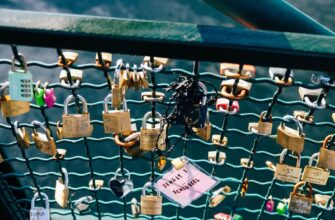- Why Wallet Encryption Matters for Crypto Beginners
- Non-Custodial Wallets: Your KYC-Free Gateway
- Step-by-Step: Encrypting Your Wallet Without KYC
- Fortifying Your Encrypted Wallet: 5 Security Musts
- FAQs: Crypto Wallet Encryption Without KYC
- Is non-KYC wallet encryption legal?
- Can I recover funds if I forget my encryption password?
- Do encrypted wallets protect against malware?
- How often should I change my encryption password?
- Are “no KYC” wallets traceable?
Why Wallet Encryption Matters for Crypto Beginners
Imagine your crypto wallet as a digital vault – encryption is its unbreakable lock. For beginners navigating decentralized finance, encrypting your non-KYC wallet isn’t optional; it’s your first line of defense against hackers and unauthorized access. Unlike traditional bank accounts, crypto transactions are irreversible. Once funds leave your wallet, there’s no customer service hotline to call. Encryption scrambles your private keys and seed phrases into complex code, ensuring only someone with your password can access your assets. This becomes especially critical when using non-custodial wallets that don’t require KYC verification, putting full security responsibility in your hands.
Non-Custodial Wallets: Your KYC-Free Gateway
Non-custodial wallets like MetaMask, Trust Wallet, or Exodus allow you to encrypt assets without identity verification (KYC). Here’s why they’re ideal for privacy-conscious beginners:
- Full Control: You exclusively hold private keys – no third party can freeze or seize funds
- Zero Personal Data: Setup requires no ID documents, phone numbers, or selfies
- Universal Access: Use anywhere without geographic restrictions or bank approvals
- Encryption-Ready: Built-in security features for password protection
Warning: This autonomy means losing your password = permanent asset loss. No recovery options exist without your seed phrase.
Step-by-Step: Encrypting Your Wallet Without KYC
Follow this universal process using MetaMask as an example (works similarly for most non-custodial wallets):
- Download & Install: Get the wallet from official sources (e.g., metamask.io)
- Create New Wallet: Select “Create a New Wallet” – avoid any “verify identity” prompts
- Backup Seed Phrase: Write the 12-24 words on paper (never digitally)
- Set Encryption Password: Create a 12+ character password with symbols, numbers, uppercase/lowercase letters
- Enable Auto-Lock: Set wallet to lock after 1 minute of inactivity
- Verify Encryption: Close/reopen wallet – it should demand your password
Pro Tip: Use a password manager like KeePassXC for complex password storage – never reuse passwords from other accounts.
Fortifying Your Encrypted Wallet: 5 Security Musts
- Offline Seed Storage: Keep written phrases in fireproof safes – never cloud or photos
- Multi-Device Isolation: Install wallets only on dedicated devices without social/media apps
- Transaction Whitelisting: Use wallets like Exodus to pre-approve withdrawal addresses
- Hardware Hybrid: Pair with Ledger/Trezor for signing transactions offline
- Phishing Defense: Bookmark wallet sites – never click email/SMS links
FAQs: Crypto Wallet Encryption Without KYC
Is non-KYC wallet encryption legal?
Absolutely. Encryption tools are legal privacy measures worldwide. Regulations target exchanges, not personal wallet security.
Can I recover funds if I forget my encryption password?
Only via your seed phrase. Wallets can’t reset passwords – that’s the point of decentralization. Store phrases securely!
Do encrypted wallets protect against malware?
Encryption shields idle wallets, but active sessions are vulnerable. Use antivirus software and never enter passwords on public Wi-Fi.
How often should I change my encryption password?
Only if compromised. Frequent changes increase forgetfulness risks. Focus instead on password strength and device security.
Are “no KYC” wallets traceable?
Wallet addresses are public on blockchain explorers, but personal identities remain private unless linked to KYC exchanges during transactions.








